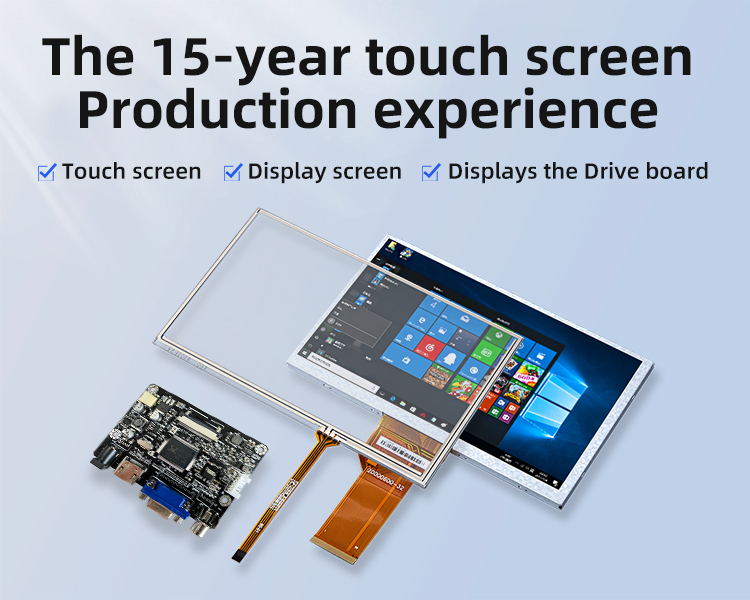Understanding the Viewing Direction of LCD Displays: A Guide to Optimal Visibility
When choosing an LCD display, one critical parameter to consider is the viewing direction, often referred to as the viewing angle. This choice directly impacts the visibility and clarity of the display under typical usage conditions. In this article, we will explore the concept of viewing direction, its importance in different applications, and how to make the right selection for your needs.
3/25/20242 분 읽기


What is Viewing Direction in LCD Displays?
The viewing direction defines the angle at which an LCD display delivers the best visual performance. Manufacturers typically offer options such as 3 o'clock, 6 o'clock, 9 o'clock, and 12 o'clock viewing angles. The 6 o'clock and 12 o'clock directions are the most commonly used and are selected based on the positioning of the display relative to the user’s line of sight.
6 o'clock Viewing Direction: Optimized for displays viewed from below, such as calculators or other devices placed on a desk or handheld.
12 o'clock Viewing Direction: Ideal for displays viewed from above, often used in instrument panels or devices mounted below the user’s line of sight.
How Viewing Direction Impacts Applications
Selecting the correct viewing direction ensures that the content displayed remains clear and legible from the intended angle. Here's how this parameter influences common applications:
Tire Pressure Monitoring Systems (TPMS)
In vehicles, 12 o'clock viewing direction is often preferred for TPMS displays since these devices are typically viewed from above. This ensures that drivers can read critical information easily without strain.Calculators and Handheld Devices
For devices like calculators, which are generally used flat on a table or handheld, the 6 o'clock viewing direction provides optimal readability from below the user’s line of sight.Automotive Clocks
Automotive displays installed to the right of the driver, such as clocks, benefit from a 9 o'clock viewing direction, ensuring easy readability from the driver's position.Industrial Instrument Panels
In machinery or control systems, the mounting position of the display dictates the viewing angle. 12 o'clock viewing direction is common in control panels positioned below eye level.
Key Factors to Consider When Choosing a Viewing Direction
Device Positioning: Determine whether the display will be viewed from above, below, or at eye level.
User Ergonomics: Ensure the viewing direction aligns with the natural posture of the user to minimize strain.
Environmental Lighting: Consider ambient light and glare, which may affect visibility from certain angles.
Application-Specific Needs: Different industries and devices have unique requirements. For example, medical monitors may prioritize multiple viewing angles for collaborative environments, while consumer electronics like clocks and calculators prioritize individual use.
Improving LCD Display Performance with Optimal Viewing Direction
Modern LCD technology has advanced to provide wider viewing angles, often achieved through IPS (In-Plane Switching) or VA (Vertical Alignment) technologies. These advancements allow for improved visibility in multiple directions, reducing the dependency on strict viewing angles. However, for applications requiring precise alignment, selecting the appropriate viewing direction remains crucial.
Future Trends in LCD Viewing Technologies
As industries demand higher clarity and flexibility, innovations in LCD displays continue to address limitations in viewing direction. Features such as adaptive angle displays and adjustable mounts are becoming standard, ensuring displays can be customized for diverse applications.
Conclusion
Understanding the viewing direction of an LCD display is essential for optimizing performance and user experience. Whether for industrial equipment, consumer electronics, or automotive applications, aligning the viewing angle with the device's usage scenario ensures clarity, efficiency, and reliability.
By carefully evaluating your requirements and selecting the right viewing direction, you can maximize the functionality of your LCD display and ensure long-term satisfaction. For specialized guidance and tailored display solutions, STOUCH is committed to delivering high-quality products designed to meet diverse industry needs.
Get in touch
Display Solutions
Custom touch displays for industrial and medical solutions Specific to Your Needs.
Quality First
Expert in touch panels
15 Years in Touch Solutions | Your One-Stop-Manufacturer | STOUCH © 2024. All rights reserved.
